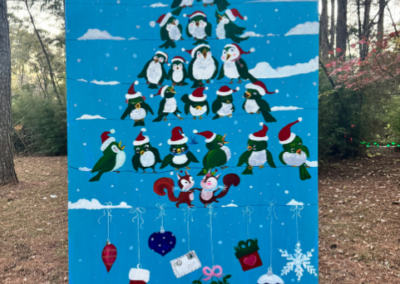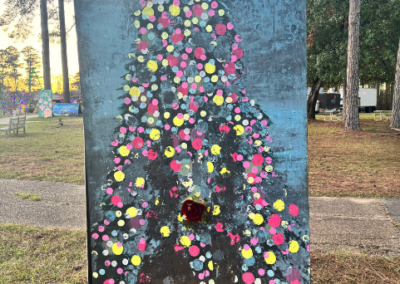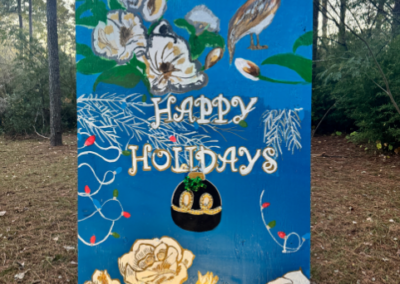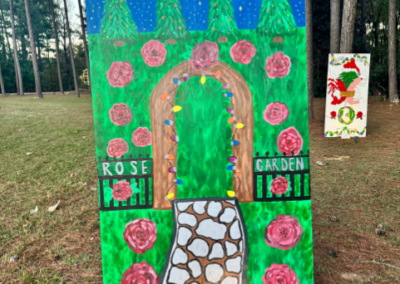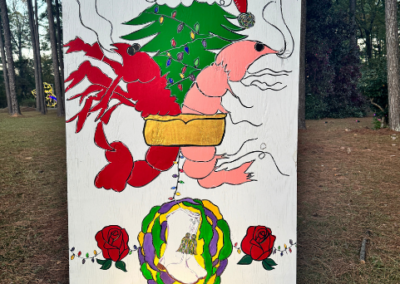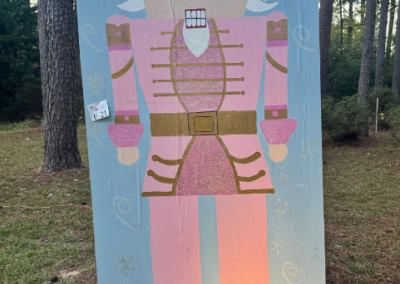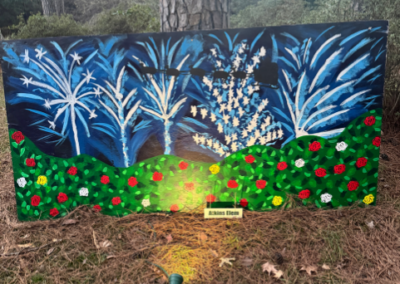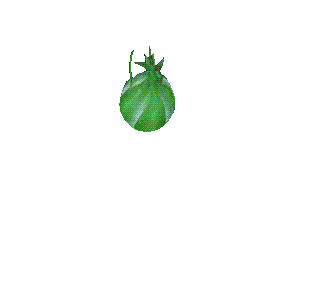This article is from Roses & You, March 2019
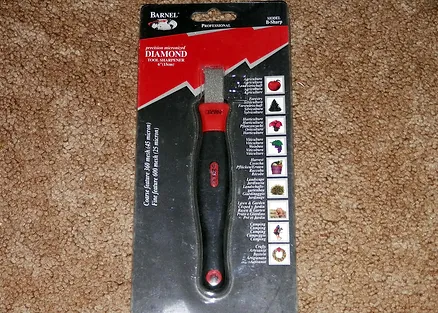
First thing… Before gardening season starts, clean your pruners. Oven cleaner works very well for removing the built-up blackened sap from the blades of your pruners. Spray the cleaner on the blades and let it soak for five minutes or so, then wipe them off. If there is still more residue, spray them again and repeat. If the buildup is not all coming off, you can use steel wool or a scotch brite pad to help remove it. Rust can also be removed this way. Sharpen the pruners next. I use a Barnel diamond edge sharpener I had gotten from the Harlane Company- www.harlane.com. Frank Benardella said he used a diamond chip nail file which worked very similarly. When sharpening, only do the edge from the angled side and match the angle which is on the blade. After you’re done with the beveled side, turn the pruners over and remove any burrs on the flat side by holding the sharpener flat against the blade very lightly pulling it toward the sharpened edge. Once the pruners are sharpened, spray them with WD-40 or a similar lubricant.
Being left-handed, I use a Felco #9 pruner. I found no matter how sharp a right-hand pruner was, the cut was not always clean, this solve that problem.
After breaking or seriously dulling pruners or loppers, I think I finally learned to use the right tool when pruning heavier or hard canes. My arsenal now includes ARS 2’ extended handle cut & hold pruners, a 15-inch Fiskars power gear lopper, 32-inch Fiskars power lever loppers, 5’ Fiskars pruning stik®, and a folding Stanley pruning saw. The extended handle pruners and pruning stik® are very helpful for pruning climbers or large shrub or OGRs, because you can reach most tops without a step stool or ladder. The older we get, the less climbing we want to do.
A good pair of leather gloves is also recommended too, the gauntlet styles are even better. If yours get like mine, with holes in the fingers, consider replacing them. Anyone who does not wear glasses should also consider eye protection when trimming or pruning your roses. Canes have a habit of whipping in the wind or snapping back toward you, and you want to protect your eyes!
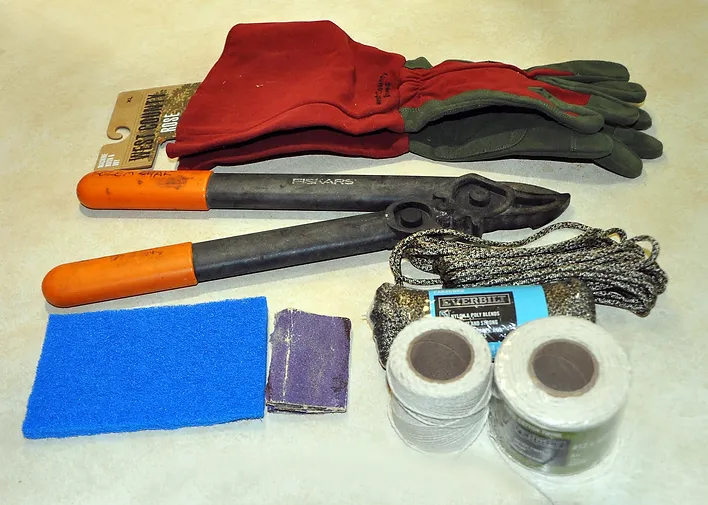
I have always used cotton twine tying up my climbers. It last for about a year, so I usually retie them each year when I prune. One year I did not, and my huge Laguna climber crashed to the ground. Now I make sure I use a heavier paracord, which I got at Home Depot, to secure the main canes on my large climbers. This will never break, and I have been able to untie it fairly easily and reuse it to fasten the canes year after year. It is available in tan or green camouflage, so it blends in very well. I still use the cotton twine for smaller canes or temporary fastening.
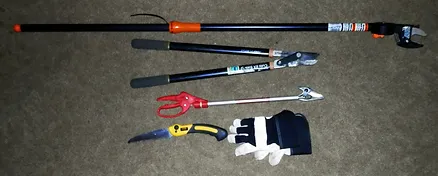
Before we get busy in the garden, spring is a good time to check to see if you have had a tetanus shot in the last 10 years. It is recommended every 5 years, but no more than 10. If not, you should schedule one as tetanus is a soil borne disease and it is easy to get scratched when working around roses.
